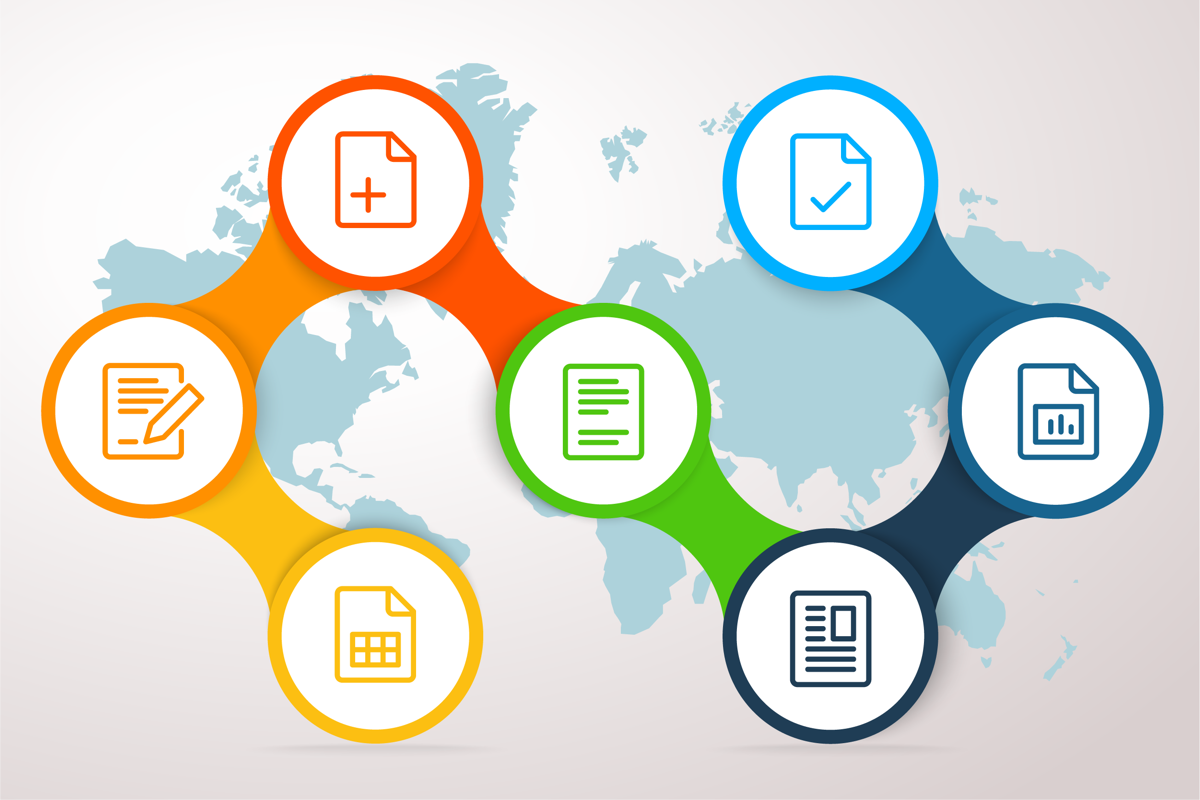Your integration journey
Sending documents to Tradeshift
Discover & Define
- Review of current content
- Best practice consultancy
- Define sending method
Build & Test
- Set up Tradeshift account
- Build integration
- Test document flow in test environment
Go Live & Hypercare
- Send documents in production
- Tradeshift monitors and helps to resolve any issues
- Consultation on further integrations and financing options available
Transfer Protocols
Integrate with Tradeshift by implementing the Tradeshfit API. The Tradeshift API is REST based which makes it simple and fast to implement. Companies can send Business documents as well as take advantage of a wide range of functionalities via the Tradeshift API. Check out this article in the Tradeshift Knowledge Base as well as the comprehensive documentation in our Developer Center. For different transfer protocol options Tradeshift offers the Babelway app. Babelway acts as middleware to interface with any ERP system and it offers a wide range of transfer protocols for easy connectivity. For more details please, look at the article in the Tradeshift Knowledge Base.
Data formats
Tradeshift natively supports the Universal Business Language (UBL). In order to assist you or your IT partner, we have created an information package which contains detailed information on what fields to fill out, what code lists to use, example files and other helpful tips.
If your accounting software supports UBL version 2.0, you can use the bellow documentation package and build your business documents export based on the included specifications. Tradeshift however supports virtually any data format via our Babelway middleware.
Universal Business Language (UBL)
UBL is an open library of standard electronic business documents from procurement and transportation to payments. It includes document types such as purchase orders, invoices, credit notes, receipt and remittance advices and much more. UBL was developed by the OASIS Technical Committee with participation from a variety of industry data standards organisations. UBL is described in an extensive overview in the article “What is UBL?” describing customising and extending UBL, the governance of UBL, how UBL is modelled, and thoughts regarding deploying UBL. Tradeshift uses UBL as the preferred language for handling business documents. This means that business documents are exchanged with Tradeshift users in UBL format, and UBL concepts such as subsets, profiles, business objects, code lists, extensions, validation etc., are heavily used when handling business documents.

Learn the core concepts of integrating with Tradeshift, and where you can find the tools you need to get started.